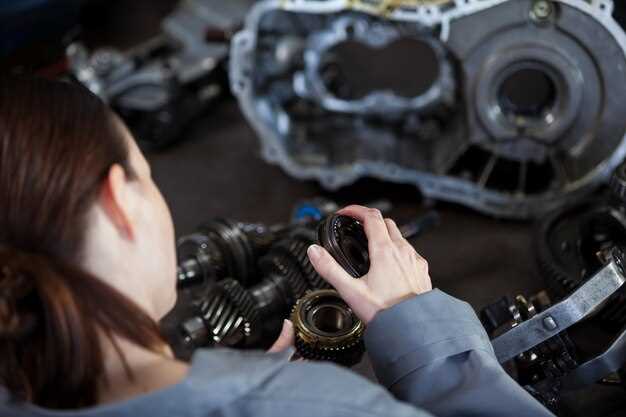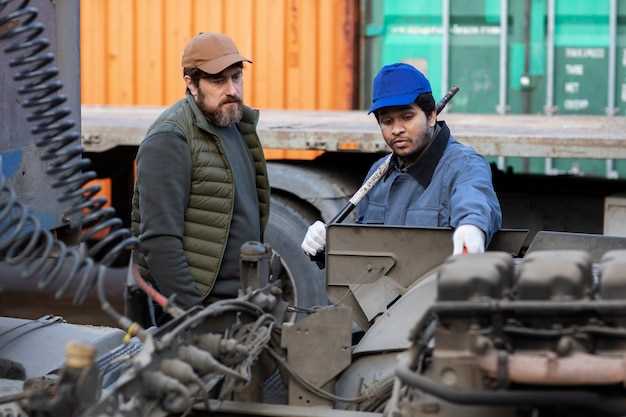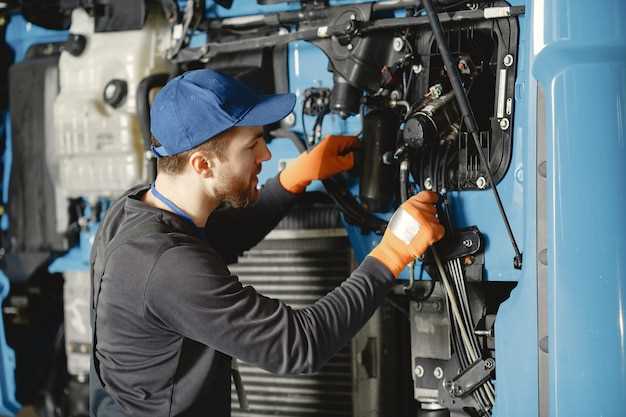Troubleshooting overheating in marine engines

Overheating is a critical issue that can severely impact the performance and longevity of a marine engine. Understanding the causes of overheating and promptly addressing them is essential for maintaining operational efficiency and ensuring safety on the water. Various factors can contribute to cooling system failures, which are often the root cause of engine temperature increases.
Proper cooling is vital for marine engines, as they operate under strenuous conditions. From seawater intake to the exhaust system, any disruption in the cooling process can lead to elevated temperatures. This article will explore common reasons behind marine engine overheating, including issues with the water intake system, faulty thermostats, and malfunctioning heat exchangers.
By systematically troubleshooting these components, boat owners and operators can identify and resolve overheating problems efficiently. Recognizing the symptoms early and understanding the proper cooling mechanisms will not only prolong the life of the marine engine but also enhance its performance for years to come.
Identifying Common Causes of Marine Engine Overheating
Marine engine overheating is a critical issue that can lead to severe damage if not addressed promptly. Understanding the most common causes of overheating is essential for effective troubleshooting and ensuring the longevity of the engine.
Insufficient Cooling Water Supply is one of the primary reasons for overheating. This can result from a clogged intake strainer or a malfunctioning sea water pump. If the water flow is restricted, the engine will not receive adequate cooling, causing it to overheat rapidly.
Malfunctioning Thermostat can also contribute to engine overheating. The thermostat regulates the flow of coolant within the engine. If it fails to open or is stuck in a closed position, it prevents coolant from circulating, leading to elevated temperatures.
Blocked or Damaged Cooling Passages within the engine can hinder the flow of coolant, resulting in hotspots and overheating. Regular maintenance, including flushing the cooling system, can help prevent this issue.
Worn or Damaged Water Pump components, such as impellers or seals, can reduce efficiency. A failing water pump may not provide sufficient coolant flow, contributing to overheating problems. Checking the water pump regularly can help avert this situation.
Excessive Engine Load can also cause overheating. Operating the engine beyond its rated capacity, especially in demanding conditions, can lead to increased temperature levels. It’s crucial to monitor engine performance and avoid overloads.
Poor Quality or Incorrect Coolant can negatively impact cooling efficiency. Using the wrong type of coolant or allowing the coolant to degrade can lead to inadequate heat transfer, resulting in overheating. Always use manufacturer-recommended coolants and replace them as per the service schedule.
By identifying and addressing these common causes of marine engine overheating, boat operators can enhance the performance and reliability of their vessels, ultimately ensuring a smoother and safer experience on the water.
Assessing and Maintaining Marine Cooling Systems
The integrity of marine cooling systems is crucial to ensuring optimal engine performance and preventing overheating. Proper assessment and maintenance techniques can significantly reduce the risk of engine failure and extend the lifespan of marine vessels. Below are key aspects to consider.
1. Regular Inspections
Frequent inspections allow for the early detection of potential issues within the cooling system. Key components to check include:
- Cooling Water Intake: Ensure that the intake is free of debris and obstructions.
- Heat Exchangers: Look for signs of corrosion, scaling, or blockages that could impede performance.
- Pumps: Verify that the water pump is functioning correctly and check for leaks.
- Hoses and Fittings: Inspect for cracks, wear, or loose connections that can lead to coolant loss.
2. Temperature Monitoring
Monitoring the operating temperature of the engine is vital. Use a reliable thermometer or gauge to:
- Identify any unexpected temperature spikes.
- Ensure that the operating temperature remains within the manufacturer’s specified range.
- Document temperature readings to track trends and identify issues over time.
3. Regular Maintenance Tasks

Maintaining a marine cooling system involves several routine tasks that contribute to optimal functionality:
- Change the coolant as per the manufacturer’s recommendations to prevent contamination and corrosion.
- Flush the cooling system periodically to remove buildup and debris that can cause blockages.
- Replace any worn or damaged components promptly to prevent further issues.
- Check and clean the sea strainer regularly to ensure efficient water flow.
4. Troubleshooting
If the engine overheats or shows signs of cooling system failure, immediate troubleshooting is necessary. Steps to take include:
- Inspect the cooling system for leaks or damaged components.
- Check the coolant level and top it up as necessary.
- Assess the thermostat for proper operation; a faulty thermostat can hinder coolant flow.
- Evaluate the water pump and ensure it is maintaining adequate flow.
5. Expert Consultation
In cases of persistent overheating issues, seek the expertise of a marine technician. They can conduct a thorough evaluation and make recommendations for repairs or upgrades to the cooling system.
By following these guidelines for assessing and maintaining marine cooling systems, vessel operators can proactively address cooling issues, ensuring that the engine operates efficiently and safely under various conditions.
Implementing Immediate Repairs for Overheating Engines

When dealing with marine engine overheating, swift action is crucial to prevent irreversible damage. Identifying the root cause of elevated temperature is the first step in implementing effective repairs.
Inspect the Cooling System: Begin with a comprehensive examination of the cooling system. Check for obstructions in the water intake and ensure that the seawater strainer is clean. Clogged filters can restrict water flow, leading to overheating.
Examine the Thermostat: A malfunctioning thermostat can cause improper regulation of engine temperature. Test the thermostat for functionality by submerging it in hot water to see if it opens at the specified temperature. Replace it if necessary.
Check the Water Pump: The water pump is essential for circulating coolant. Inspect the pump for signs of wear or damage, such as leaks or unusual noises. If the pump is found faulty, it must be replaced promptly to restore proper circulation.
Inspect Hoses and Connections: Examine all hoses connected to the cooling system for cracks or leaks. Ensure that clamps are secure and not allowing coolant to escape. Replace any damaged hoses immediately to maintain system integrity.
Monitor Engine Load: Overloading the engine can lead to overheating. Ensure that the vessel is not carrying more weight than it is designed for. Reducing the load may alleviate overheating issues in some cases.
Conduct an Oil Check: Insufficient or degraded engine oil can also lead to increased temperatures. Check the oil level and condition. Replace the oil and filter if it appears contaminated or if the level is low.
Utilize Diagnostic Tools: If overheating persists, consider using diagnostic tools to evaluate engine performance. Instruments that monitor temperature gauges and water flow will aid in pinpointing the issue more precisely.
Implementing these immediate repairs can help mitigate overheating issues in marine engines. Regular maintenance and prompt action in addressing concerns will ensure optimal engine performance and longevity.




